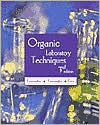5
1
9780534379810


Organic Laboratory Techniques / Edition 3 available in Paperback

Organic Laboratory Techniques / Edition 3
- ISBN-10:
- 0534379818
- ISBN-13:
- 9780534379810
- Pub. Date:
- 07/12/2000
- Publisher:
- Cengage Learning
- ISBN-10:
- 0534379818
- ISBN-13:
- 9780534379810
- Pub. Date:
- 07/12/2000
- Publisher:
- Cengage Learning

Organic Laboratory Techniques / Edition 3
$120.0
Current price is , Original price is $120.0. You
$120.00
This item is available online through Marketplace sellers.
$23.17
This item is available online through Marketplace sellers.
120.0
Out Of Stock

Product Details
| ISBN-13: | 9780534379810 |
|---|---|
| Publisher: | Cengage Learning |
| Publication date: | 07/12/2000 |
| Edition description: | REV |
| Pages: | 240 |
| Product dimensions: | 7.42(w) x 9.25(h) x 0.51(d) |
About the Author
From the B&N Reads Blog

